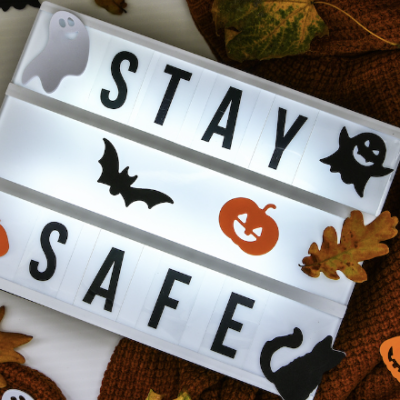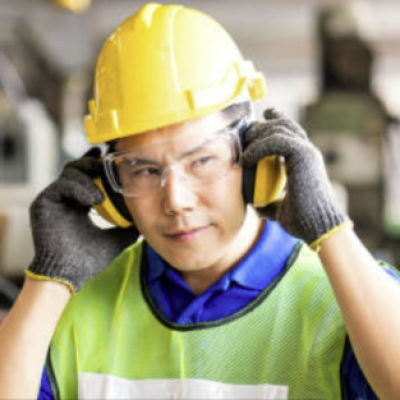Crystalline Silica
Tuesday, October 13, 2020 John Coniglio
The new regulation for silica exposure and construction tasks is on the books and being enforced by OSHA. Owners and general contractors are expecting compliance and all too often contractors are unprepared for proper compliance.
If you’re cutting concrete, mixing mortar, or simply drilling into concrete you need to have a plan and the proper equipment and information on the exposure. Hopefully the following will help with this understanding and assist with your activities and compliance. Here are some frequently asked questions:
Q: What is it?
A: Crystalline silica is a basic component of soil, sand, granite, and many other minerals. Quartz is the most common form of crystalline silica. Cristobalite and tridymite are two other forms of crystalline silica. All three forms may become respirable size particles when workers chip, cut, drill, or grind objects that contain crystalline silica.
Q: What are the hazards of crystalline silica?
A. According to OSHA, silica exposure remains a serious threat to nearly 2 million U.S. workers, including more than 100,000 workers in high-risk jobs such as abrasive blasting, foundry work, stonecutting, rock drilling, quarry work, tunneling, and construction. Crystalline silica has been classified as a human lung carcinogen. Additionally, breathing crystalline silica dust can cause silicosis, which in severe cases can be disabling, or even fatal. The respirable silica dust enters the lungs and causes the formation of scar tissue, thus reducing the lungs’ ability to take in oxygen. There is no cure for silicosis. Since silicosis affects lung function, it makes one more susceptible to lung infections like tuberculosis. In addition, smoking causes lung damage and adds to the damage caused by breathing silica dust
Q: What is silicosis?
A: Silicosis is classified into three types: chronic/classic, accelerated and acute.
- Chronic/classic silicosis, the most common, occurs after 15–20 years of moderate to low exposures to respirable crystalline silica. Symptoms associated with chronic silicosis may or may not be obvious; therefore, workers need to have a chest x-ray to determine if there is lung damage. As the disease progresses, the worker may experience shortness of breath upon exercising and have clinical signs of poor oxygen/carbon dioxide exchange. In the later stages, the worker may experience fatigue, extreme shortness of breath, chest pain, or respiratory failure.
- Accelerated silicosis can occur after 5-10 years of high exposures to respirable crystalline silica. Symptoms include severe shortness of breath, weakness, and weight loss. The onset of symptoms takes longer than in acute silicosis, but nevertheless, it is a death sentence.
- Acute silicosis occurs after a few months or as long as two years following exposures to extremely high concentrations of respirable crystalline silica. Symptoms of acute silicosis include severe disabling shortness of breath, weakness, and weight loss, which often leads to death.
Q: What construction trades are affected?
A: Masons, mason’s tenders, laborers, dry wall installers, plumbers, electricians, fire systems installers, demolition contractors or literally any trade that may have the occasion to drill, cut or mechanically disturb concrete, block and brick.
Q: What is OSHA asking me to do?
A: If you are a contractor and work in the construction industry you need to develop a plan to reduce exposure to your employees. This is called an exposure control plan. Regardless of which exposure control method is used, all construction employers covered by the standard are required to:
- Establish and implement a written exposure control plan that identifies tasks that involve exposure and methods used to protect workers, including procedures to restrict access to work areas where high exposures may occur.
- Designate a competent person(s) to implement the written exposure control plan.
- Restrict housekeeping practices such as dry sweeping that expose workers to silica where feasible alternatives are available.
- Offer medical exams- including chest X-rays and lung function tests- every three years for workers who are required by the standard to wear a respirator for any portion of a day 30 or more days per year.
- Train workers on work operations that result in silica exposure and ways to limit exposure.
- Keep records of exposure measurements, objective data, and medical exams.
Q: How do you do exposure measurements?
A: You may not have to. OSHA has taken 18 common construction tasks with effective dust control methods such as using water to keep dust from getting into the air or using a vacuum high efficiency filtered dust collection system to capture dust. In some operations, respirators may also be needed. Employers who follow Table 1 correctly are not required to measure workers’ exposure to silica from those tasks and are not subject to the PEL.
Q: Can you explain Table 1:
A: When developing the new construction crystalline silica standard, OSHA identified 18 common construction tasks that potentially release crystalline silica and codified as 29 CFR 1926.1153, Table 1. They reviewed extensive testing conducted by manufacturers who designed engineering controls that would control exposure to crystalline silica making air sampling unnecessary. It is important to note, that strict adherence to the manufacturer’s instructions must be followed. OSHA has also indicated that they are researching expanding Table I activities. Table 1, can be downloaded at https://www.osha.gov/silica/Table1sect1926.1153.pdf.
Q: What if my construction activity is not listed in Table 1?
A: Some construction activities are not covered. The most prevalent is when the contractor is placing block and/or brick and assigns an employee to add dry mortar mix with water combined in the hopper to the right consistency, exposing the worker to a plume of dust that may contain crystalline silica. Engineering controls must be added such as exhaust ventilation, misting of the air during the dumping of the bag with a second worker, placing the bag into the hopper and cutting the bottom of the bag and lifting it out of the hopper. These methods need to be tried and evaluated with air sampling verification to develop a procedure that works.
Q: What air sampling is required?
A: Airborne respirable crystalline silica is sampled with the use of a battery-powered pump connected with tubing to a cassette housing a filter that is impacted with suspected crystalline silica. There are other things that you need to know because the sample is the respirable fraction of the total sample, the smaller (respirable) particulates are captured with the use of a cyclone or parallel particulate impactor from the breathing zone, a 9-inch imaginary sphere around the mouth and nose. Once collected, the sample is sent to an industrial hygiene laboratory where it is analyzed, and the exposure is calculated based on the speed of the pump and the duration of the sample.
Q: You mentioned training. What topics are involved?
A: The employer must demonstrate knowledge and understanding of:
- The health hazards associated with exposure to respirable crystalline silica
- Specific tasks in the workplace that could result in exposure to respirable crystalline silica
- Specific measures the employer has implemented to protect employees from exposure to respirable crystalline silica, including engineering controls, work practices, and respirators to be used
- The contents of this section
- The identity of the competent person designated by the employer
- The purpose and a description of the medical surveillance program
- The employer shall make a copy of this section readily available without cost to each employee covered by this section.
- Amend hazard communication training to include crystalline silica
Q: What is the purpose of medical surveillance?
A: The purpose of medical surveillance is, when reasonably possible, to:
- Identify adverse health effects associated with respirable crystalline silica exposure so that appropriate actions can be taken.
- Determine if an employee has any condition, such as a lung disease, that might make him or her more sensitive to respirable crystalline silica exposure. This will involve a full medical evaluation, chest x-ray read by a specially trained radiologist, pulmonary function studies, and tuberculosis evaluation.
- Determine the employee's fitness to use respirators.
In response to the information gained through medical surveillance, employees can take actions to improve their health; such as making job choices to reduce exposures, wearing a respirator for extra protection, or making personal lifestyle or health decisions; such as quitting smoking or getting flu shots.




